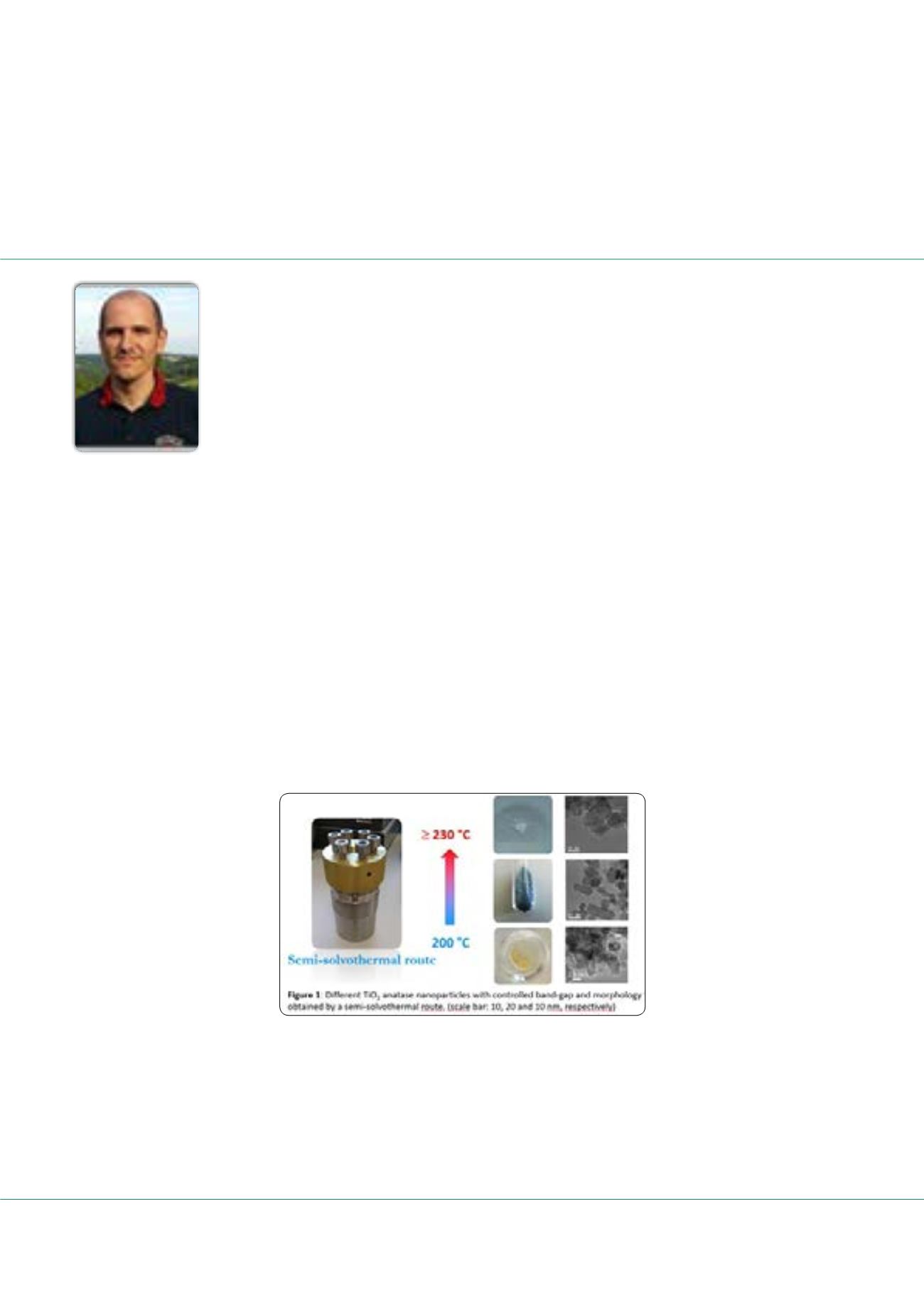

Volume 6
Research & Reviews: Journal of Material Sciences
ISSN: 2321-6212
Ceramics 2018
May 14-15, 2018
Page 36
conference
series
.com
May 14-15, 2018 | Rome, Italy
4
th
International Conference and Expo on
Ceramics and Composite Materials
David G Calatayud, Res. Rev. J Mat. Sci. 2018, Volume 6
DOI: 10.4172/2321-6212-C1-013
Band-gap engineering and morphological control of TiO
2
nanoparticles by a semi-solvothermal route
T
iO
2
has become a material of great interest for photocatalytic H
2
production, environmental purification and solar energy
conversion.[1] It is generally accepted that anatase is the most active photocatalyst of the three possible polymorphs of TiO
2
.
The properties influencing the photoactivity of anatase particles have been reported to include surface area, crystallinity, crystallite
size, crystal structure;[2,3] and the morphology of the particles. Among the key parameters boosting the photocatalytic efficiency of
anatase nanoparticles, an increased light absorption to extend the optical response to the visible, together with an improved charge
separation of the electrons and holes generated upon photoexcitation, shall be enumerated. Conventional TiO
2
anatase nanoparticles
have a bandgap of 3.20 eV which only allows the excitation of carriers by light with wavelengths smaller than 387 nm (UV region);
if visible light harvesting is to be enabled, this gap should be narrowed. In this work, pure anatase nanoparticles have been obtained
using a solvothermal process with reduced band-gap and/or reactive faces. Trifluoroacetic acid is used as morphological control and
doping agent, and urea is employed as a reduction agent.[4,5] Through the careful choice and control of the working conditions, it
is possible to control the final properties of the produced nanoparticles, e.i. morphology, size, crystallinity, crystal phase, network
defects and band gap. The obtained results point out that in order to improve the photocatalytic performance, a well-designed
intrinsic defective TiO
2
system for visible light driven photocatalysis should meet all three requirements simultaneously: (i) reduced
band gap for visible light absorption, (ii) appropriate energy level to initiate photocatalytic reaction, and (iii) proper defect species
or highly active surfaces to separate photo-generated charge-carriers (electrons and holes) for reaching high catalytic performance.
Recent Publications
1. Xu H, Ouyang S, Liu L, Reunchan P, Umezawa N, Ye J (2014) Recent advances in TiO
2
-based photocatalysis. J. Mater. Chem.
A 2: 12642-12661.
2. Sclafani A, Herrmann J M (1996) Comparison of the Photoelectronic and Photocatalytic Activities of Various Anatase and
Rutile Forms of Titania in Pure Liquid Organic Phases and in Aqueous Solutions. J. Phys. Chem. 100: 13655-13661.
3. Carp O, Huisman C L, Reller A (2004) Photoinduced reactivity of titanium dioxide. Prog. Solid State Chem. 32: 33-177.
David G Calatayud
Instituto de Ceramica y Vidrio –CSIC, Spain
















